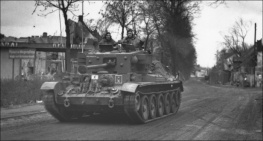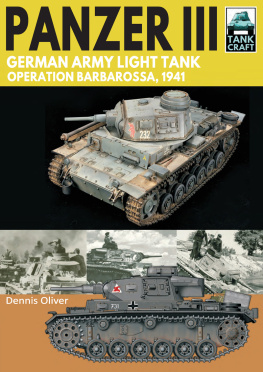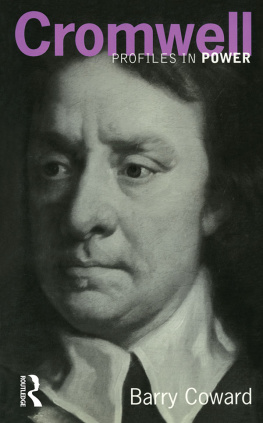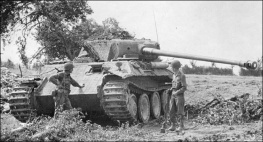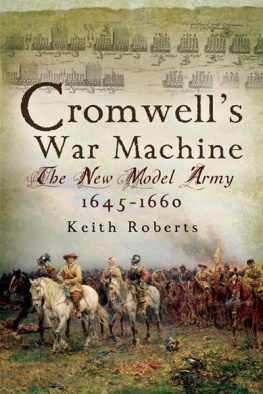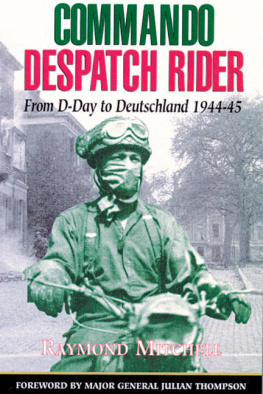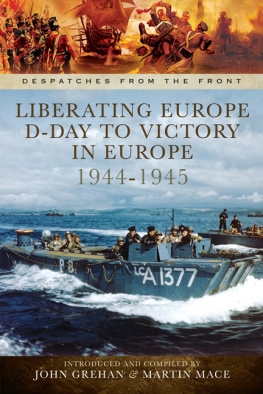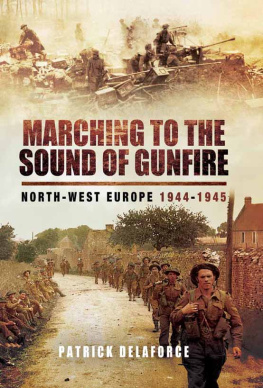First published in Great Britain in 2018 by Pen & Sword Military
An imprint of Pen & Sword Books Ltd
47 Church Street, Barnsley, South Yorkshire, S70 2AS
Copyright Pen & Sword Ltd, 2018
Artwork copyright Dennis Oliver
ISBN 9781526725424
eISBN 9781526725424
Mobi ISBN 9781526725431
The right of Dennis Oliver and Oliver Publishing to be identified as the Authors of this work has been asserted by them in accordance with the Copyright, Designs and Patents Act 1988.
A CPI catalogue record for this book is available from the British Library.
All rights reserved. No part of this book may be reproduced or transmitted in any form or by any means, electronic or mechanical including photocopying, recording or by any information storage and retrieval system, without permission from the publisher in writing.
Pen & Sword Books Ltd incorporates the Imprints of Pen & Sword Military, Pen & Sword Family History, Pen & Sword Maritime, Pen & Sword Aviation, Pen & Sword Discovery, Wharncliffe Local History, Wharncliffe True Crime, Wharncliffe Transport, Pen & Sword Select, Pen & Sword Military Classics, Leo Cooper, The Praetorian Press, Remember When, Seaforth Publishing and Frontline Publishing.
For a complete list of Pen & Sword titles please contact
PEN & SWORD LIMITED 47 Church Street, Barnsley, South Yorkshire, S70 2AS,
England
E-mail:
INTRODUCTION
In late 1940 the War Offices Department of Tank Design () issued a preliminary specification for a new cruiser tank as a replacement for the Crusader, which was at that time being prepared to serve with the regiments of the Royal Armoured Corps in North Africa. The order called for a much more heavily protected tank with armour thicknesses of 65mm on the hull front and 75mm for the turret. The new tank was to be armed with the Ordnance Quick-Firing (OQF) 6pdr gun which had itself been in development since 1938 when it was realised that the standard anti-tank gun of the period, the 2pdr, would not be adequate to deal with the next generation of German tanks.
Both Vauxhall Motors and the Birmingham Railway Carriage and Wagon Company (BRCW) offered designs for the new tank but it was decided that Nuffield Mechanisation and Aero, which had manufactured the Crusader, would undertake production of what was by now designated A24 Cruiser Mk VII.
In January 1941 six pilot models were ordered and these were to be fitted with Nuffields 410hp Liberty engine. At the same time Leyland Motors and Rolls-Royce had been co-operating on the development of an un-supercharged version of the highly successful Merlin aircraft engine for use in an armoured vehicle. The result was the Meteor, a twelve-cylinder motor capable of 600hp, offering a significant increase in power over the Liberty which had in fact changed little from the original design first introduced into service during the 1914-18 war. The Meteor had been tested in a modified Crusader in early 1941 and the results were so impressive that it was immediately decided that the new engine would be adopted for the A24 project ().
However, the Meteor would not be available in quantity for some time and it was accepted that A24 production would have to go ahead, initially at least, with the Nuffield Liberty engine. As late as September 1941 design and development of the new cruiser was proceeding along two quite distinct paths with Nuffields producing their Liberty-engined A24 and BRCW working on the Meteor-powered version. In addition, the BRCW variant had replaced the problematic Wilson transmission with a Merritt-Brown model, a much-improved suspension and a revised cooling system and was given the new designation of A27 Cruiser Mk VIII (). Somewhat confusingly, both tanks retained the name Cromwell.
By this time the Nuffield A24 design was exhibiting so many teething problems that the War Office felt it necessary to reduce the number ordered. In the meantime the BRCW prototype had completed its initial trials with some success and it was decided that the main effort would be diverted to the A27 programme. However, the production of the Rolls-Royce engines proceeded slowly and it was necessary to fit a number of A27 tanks with the Nuffield Liberty. These were assembled by Leyland and designated A27L while BRCW Meteor-powered tanks were referred to as A27M. This meant that by the summer of 1942 three versions of the Cromwell tank were simultaneously under development and in an effort to alleviate some of the resulting confusion, the War Office ordered that the Nuffield, Leyland and BRCW tanks be referred to initially as Cromwell I, II and III and later as A24 Cruiser Mk VII Cavalier, A27L Cruiser Mk VIII Centaur and A27M Cruiser Mk VIII Cromwell respectively ().

Engine fitters examine a Meteor engine at a training facility in Britain in early 1944. The tank is a Cromwell Mk I which has been relegated to an instructional role. Of note are the early perforated road wheels.
Notes
. Not to be confused with the Tank Board, a committee made up of manufacturers, government officials, service personnel and other interested parties, which met weekly.
. With a typical lack of urgency the Tank Board ordered that full-scale production of the Meteor begin relatively early.
. Engine overheating had been a major problem with the Crusader, particularly in the desert, caused largely by altering the Liberty Mk III to fit the tanks cramped engine compartment.
.

Photographed in the early hours of 6 June 1944, this Centaur is one of two vehicles from 4th Battery, 2nd Armoured Support Regiment, Royal Marine Armoured Support Group that took part in the assault on the German strongpoint WN-26 at Langrune-sur-Mer. Just visible behind the soldier in the left background is the other tank which was disabled after losing a track to German mines.
By 1943 those Cavaliers that had been completed were relegated to a training role or used as Artillery Observation Post (AOP) tanks. In addition, it was decided that production would continue on the Centaur and Cromwell until sufficient Meteor engines were available, at which time the Centaur would be phased out of production. Indeed, by this time the Centaurs main function was seen by the War Office as providing hulls which could be used in future Cromwell production.
During the fighting in North Africa and Sicily, the British armys experience with the US M4 medium tank had shown the efficacy of the dual-purpose 75mm gun which, in addition to its anti-tank capability, could fire an effective high-explosive round and a suitably re-bored version of the 6pdr, the Ordnance ROQF 75mm gun, was incorporated into the A27 production schedule (). The resulting vehicle was referred to as the Cromwell IV and was the most numerous variant produced with almost 2,000 vehicles leaving the assembly lines. But in the same way that development and manufacturing delays dogged the installation of the Meteor engine, sufficient quantities of the new 75mm weapons would not be available for some time and both the Centaur and Cromwell continued to be assembled with 6pdr guns. In fact, none of the 75mm-armed Centaur III tanks manufactured went into combat, although over 200 were built, and as we shall see AOP Centaurs were fitted with dummy guns and the tanks of the Royal Marines were all armed with 95mm howitzers.





